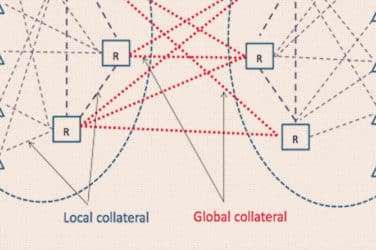
Financial technology moved trading from ‘high-touch’ to screen-based some years ago; the latest iteration is driving optimization of transacting via electronic brokerage platforms.
“In the past, we saw technology play a considerable role in helping traders transition from a yellow pad, calculator, and telephone to utilizing technology to systematically trade and gain a competitive edge,” said Anthony Huck, president and chief operating officer at Lime Brokerage, a Wedbush company. “Now, the market is more focused on other factors — how trades are processed, how to gain quicker market access, how traders hit a bid or lift an offer before the competition, and ultimately, how to gain access to 40 or 50 different dark pools with instant connectivity.”

Anthony Huck, Lime Brokerage
“Gaining liquidity is becoming increasingly pertinent in today’s market,” Huck said. “Everyone is searching for liquidity, and now that we are seeing levels near 100- and 200-lot trades as opposed to 1,000-lot, or a 5,000 or 10,000 block, fintech has firmly placed itself directly in the middle of that.”
Brokers’ need to boost efficiency and offer a more souped-up product suite comes amid a fintech boom that may or may not be in its latter stages. Global investment in fintech companies totaled $19.1 billion last year, up from $12.2 billion in 2014 and $3.9 billion in 2013, according to a recent KPMG / CB Insights report.
The largest global banks, who are some of the biggest buyers and sellers of securities in institutional markets, face a conundrum: do they embrace and invest in the technology that has the potential to eat their lunch, or do they resist? At least for now, banks seem wary, as a recent industry survey showed that fully 95% of banks fear fintech.
About a decade ago, big banks were fintech leaders, advancing the earlier gains of electronic-trading pioneers such as Instinet and ITG. “Goldman Sachs, Morgan Stanley, Credit Suisse, Deutsche Bank and others really came out with some fantastic trading tools for customers,” said Richard Herr, managing director in the investment banking group of Sandler O’Neill.
“What’s been fascinating is that the accepted wisdom at one point was that the large banks and brokers were going to squeeze smaller, and mid-sized players out of the business, but over the past several years, it’s almost been the reverse,” Herr said. “You’re seeing a next generation of players in trading technology really gain momentum.”
As an indication of the diminished clout of the so-called Bulge Bracket, Citigroup and Goldman Sachs were the only such firms represented on Institutional Investor’s 2016 Trading Technology 40. Bank of America Merrill Lynch, Credit Suisse, and Morgan Stanley didn’t make the list, but Arcesium, Rakuten and Tradier did.
With other businesses such as investment banking and research to mind, and stricter capital rules constraining pursestrings, banks don’t have the wherewithal to lead on applying fintech to trading infrastructure, market data, and risk systems.
Improving trade execution “is what we focus on, it’s what we do,” said Huck of Lime. “Where we might get an order through our trading system to market in 10 microseconds, they’re taking 50 or 100 microseconds or more.”
“About half of U.S. equity volume is generated by market participants whose strategies rely on low latency and lightning-fast trading speed. That type of trader knows fintech — it’s not like years ago, where you had electronic trading but the closest institutional end-users got to the technology was looking at a front end of an execution management system,” Huck continued. “Now traders are computer science people, they’re mathematicians, they have PhDs. They understand the technology – lines, dark fiber, switches, co-location, ports, sessions — and therefore, you have to offer a very sophisticated product.”
Aside from focus, nimbleness is another potential advantage for smaller providers of trading technology, who may have a much quicker path to turning around a project.
“Technology is very important, but so is time to market, service and scalability,” said Jarrod Yuster, chief executive officer of Pico Quantitative Trading. “Fintech is helping with cost savings but more so with getting the latest and greatest technologies to the market in better time. For example, if you’re at a large bank or institutional firm procuring equipment, i.e. servers and hardware, it can take upwards of six months to procure internally. By leveraging a vendor or partner to procure and manage the services for you, you could be established and up and running in a matter of weeks.”
“Time to market is really, really critical,” Yuster continued. “What people are looking for is turnaround. Markets have changed and technology has changed; getting your clients access to connectivity, access to new venues (SEFs), banks, dealers, exchanges is key.”
Underscoring securities brokerages’ need to optimize processes, earlier this week Bloomberg News reported that Goldman Sachs is embarking on its biggest cost-cutting push in years. “Fintech continues to increase in importance largely because we have a continued downward pressure on commission rates and a continued upward pressure on expenses,” said Herr of Sandler O’Neill.
“I think the only way you can make an acceptable return on capital is to continue to develop better technology to trade,” Herr added. “What we saw in equities trading in the late 90s and early-to-mid 2000s has now started to evolve into other asset classes, particularly cash fixed income as well as OTC derivatives trading.”
Featured image Toh Kheng Ho/PhotoSpin
<





